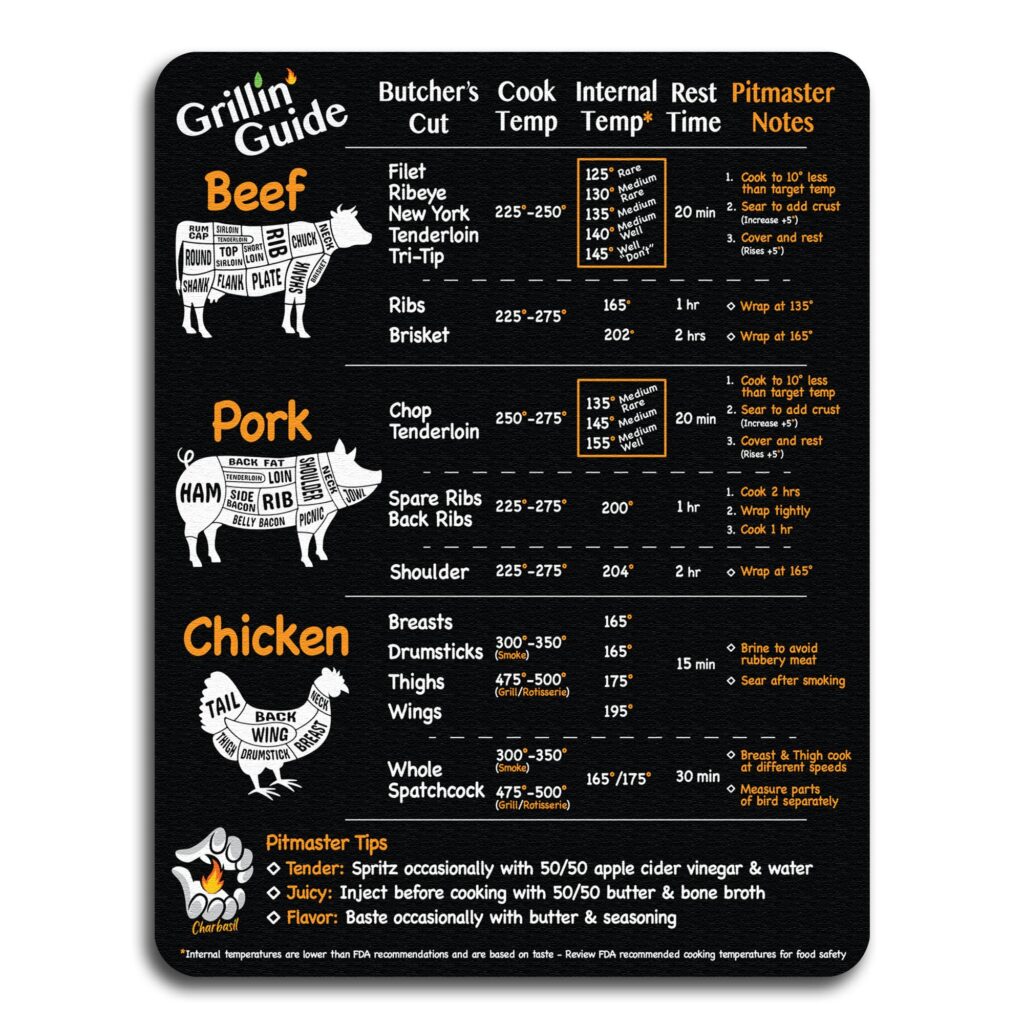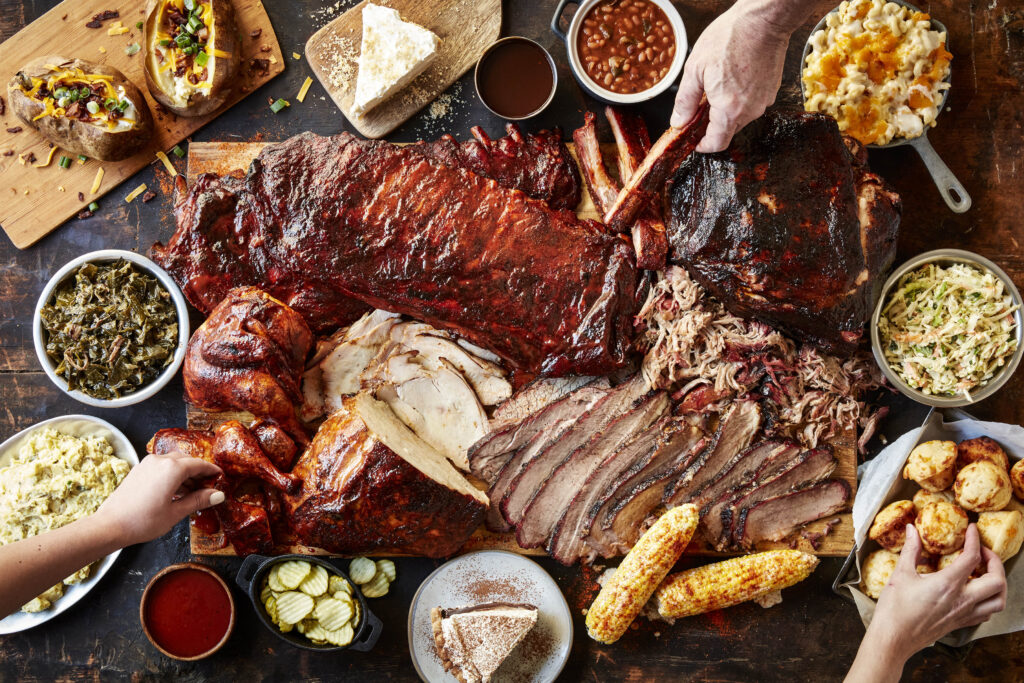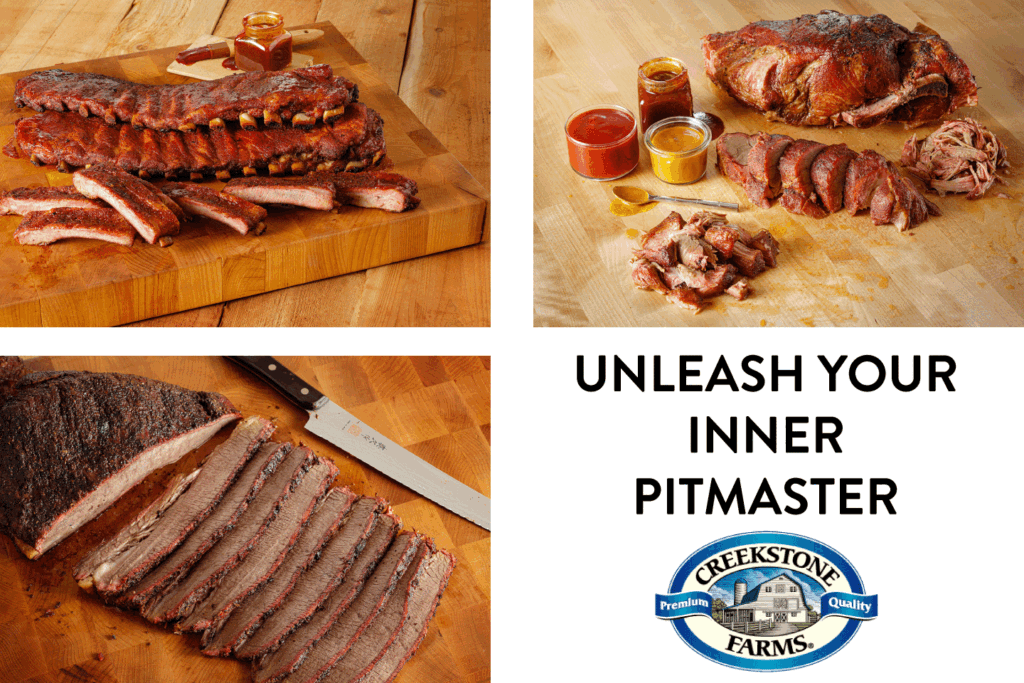Are you a barbecue enthusiast looking to take your grilling skills to the next level? Look no further! In this article, we will share with you 10 pitmaster tips that are guaranteed to help you achieve the ultimate flavor profile for your grilled masterpieces. Whether you’re a seasoned pro or a beginner, these insider secrets will unlock the secrets to mouthwatering and delectable barbecue that will leave your friends and family begging for seconds. So grab your apron, fire up your grill, and get ready to elevate your grilling game like never before. Let’s dive in!

This image is property of i0.wp.com.
1. Selecting the Right Meat Cuts
When it comes to smoking meat, selecting the right cuts is crucial for achieving that perfect flavor profile. One important factor to consider is the marbling of the meat. Choosing cuts with more marbling, which refers to the thin streaks of fat running through the meat, can greatly enhance the taste and tenderness. The fat melts during the smoking process, infusing the meat with moisture and richness.
In addition to marbling, opting for prime or choice cuts is another way to ensure a delicious outcome. These cuts come from the higher-quality muscles of the animal and tend to have more flavor and tenderness. While they may be slightly pricier, the results are definitely worth it when it comes to delivering a mouthwatering smoked meat experience.
Lastly, don’t forget to consider the type of wood you will be using for smoking. Different types of wood impart distinct flavors to the meat, so it’s important to choose wisely. Popular options include hickory, mesquite, apple, and cherry. Each wood offers a unique taste profile, so consider the flavors you want to achieve when making your selection.
2. Brine and Marinades
Brining is a technique that involves soaking the meat in a saltwater solution to enhance its moisture and flavor. By allowing the meat to sit in the brine for a certain period of time, it absorbs the liquid, resulting in a juicier and more flavorful end product. Experimenting with different brine recipes, such as adding herbs, spices, or even citrus fruits, can elevate the taste even further.
Marinades are another fantastic way to infuse flavors into the meat. Whether you choose a store-bought option or create your own unique blend, marinades can add depth and complexity to your smoked meats. Allow the meat to soak in the marinade for a few hours, or even overnight, to let the flavors penetrate the meat thoroughly. For an extra boost of flavor, consider using injections to enhance the taste from the inside out.
3. Dry Rubs and Seasonings
Dry rubs are a popular method for adding flavor to smoked meats. A well-balanced dry rub consists of a combination of spices, herbs, salt, and sugar. By creating your own blend, you can tailor it to your personal preferences and experiment with different flavor profiles. Be sure to apply the dry rub generously to the meat, ensuring that every inch is coated for maximum flavor penetration.
Before smoking the meat, it’s important to let the dry rub sit on the surface for some time. This allows the flavors to meld with the meat, creating a delicious crust during the smoking process. The sugar in the rub can also caramelize, adding a beautiful color and hint of sweetness to the final product.
For those looking to take their flavor game to the next level, homemade seasonings are a great option. By making your own mix of herbs and spices, you can create a unique flavor profile that sets your smoked meat apart from the rest. Don’t be afraid to get creative and experiment with different combinations until you find the perfect blend that suits your taste buds.
4. Smoking Techniques
Choosing the right type of smoker is crucial for achieving the ultimate flavor profile. There are various options available, such as charcoal smokers, electric smokers, and pellet smokers. Each type has its own advantages and unique features, so it’s important to consider your personal preferences and the equipment you have on hand.
When it comes to smoking, controlling the temperature and smoke is key. Maintaining a consistent temperature throughout the cooking process ensures that the meat cooks evenly and retains its moisture. Using a smoker with built-in temperature controls or investing in a separate meat thermometer can greatly assist in achieving this.
One popular smoking method for ribs is the 3-2-1 method. This technique involves smoking the ribs for three hours, wrapping them in foil with a liquid (such as apple juice or beer) for two hours, and then finishing them off unwrapped for the final hour. This method helps to tenderize the meat and infuse it with flavor, resulting in melt-in-your-mouth ribs that are sure to impress.

This image is property of Amazon.com.
5. Monitoring Internal Temperature
To ensure that your smoked meats are cooked to perfection, investing in a reliable meat thermometer is essential. Different types of meat require specific internal temperatures to be reached for optimal doneness. It’s important to familiarize yourself with these ideal temperatures to avoid undercooking or overcooking the meat.
For example, pork should be cooked to an internal temperature of 145°F (63°C), while chicken should reach 165°F (74°C). By using a meat thermometer, you can accurately gauge when the meat has reached the desired temperature, giving you confidence in achieving the perfect texture and tenderness.
Achieving the ideal internal temperature is crucial for food safety as well. Ensuring that meat is properly cooked not only enhances flavor but also eliminates any potential health risks associated with undercooked meats.
6. Wood Selection for Smoking
The type of wood you choose for smoking can greatly impact the flavor of your meats. Fruitwoods, such as apple or cherry, impart a mild and fruity flavor that pairs well with poultry and pork. These woods add a subtle sweetness to the meat without overpowering the natural flavors.
On the other hand, hardwoods like hickory and mesquite offer bolder and stronger flavors. These woods are ideal for beef and game meats as they can withstand and complement the richness of the meat. Remember to experiment with different wood combinations to discover your preferred flavor profile.
It’s important to note that when smoking delicate meats, such as fish or seafood, it’s best to avoid using wood with strong flavors as it may overwhelm the delicate flavors of the seafood. Opt for lighter woods, like alder or maple, which provide a more subtle smoky taste.

This image is property of ediblenashville.ediblecommunities.com.
7. Managing Smoke and Heat
Controlling the amount of smoke during the smoking process is crucial for achieving the perfect flavor profile. Too much smoke can result in a bitter taste, while too little may not infuse enough flavor into the meat. It’s important to find the right balance that suits your preferences.
Using a water pan in your smoker can help regulate the heat and keep it steady throughout the smoking process. The water acts as a thermal buffer, preventing drastic temperature fluctuations that can negatively affect the meat. Additionally, the moisture from the water pan can keep the meat moist and prevent it from drying out.
Another important aspect of managing smoke and heat is to avoid flare-ups. Flare-ups occur when fat drips onto the heat source, causing flames to erupt. These flames can impart a bitter taste to the meat. To prevent flare-ups, ensure that your meat is positioned away from direct heat and keep a close eye on the smoker while cooking.
8. Resting and Slicing the Meat
After removing the meat from the smoker, it’s crucial to allow it to rest before slicing. Resting the meat allows the juices to redistribute, resulting in a more evenly moist and tender final product. It’s recommended to let the meat rest for around 10-15 minutes, loosely covered with aluminum foil.
When it comes to slicing the meat, it’s important to cut against the grain for optimal tenderness. Cutting against the grain means slicing perpendicular to the muscle fibers. This results in shorter meat fibers, making each bite tender and easier to chew. Slicing against the grain ensures that every bite of your smoked meat is as delicious and melt-in-your-mouth as possible.
Preserving the juiciness of the meat is also crucial. Avoid slicing the meat immediately after removing it from the smoker, as this can cause the juices to quickly escape, resulting in dry meat. Allowing the meat to rest and then slicing it ensures that those flavorful juices are retained, resulting in a succulent and unforgettable eating experience.

This image is property of www.grillmastersclub.com.
9. Sauces and Glazes
Sauces and glazes are the perfect finishing touches to take your smoked meats to the next level of flavor. Choosing the right sauce to complement your flavor profile is essential. Whether you prefer a sweet and tangy barbecue sauce or a spicy and smoky glaze, make sure it pairs well with the meat you have smoked.
When it comes to applying the sauce or glaze, it’s best to do so towards the end of the cooking process. This prevents the sugars in the sauce from burning and becoming bitter. Applying the sauce during the last 20-30 minutes allows it to caramelize and meld with the flavors of the meat, enhancing the overall taste.
For those who want to experiment and add a personal touch, homemade glazes are a fantastic option. By combining different ingredients, such as honey, soy sauce, or even fruit preserves, you can create a unique glaze that perfectly complements your smoked meat. Don’t be afraid to get creative and venture beyond traditional flavors to discover a glaze that surprises and delights your taste buds.
10. Presentation and Pairings
The way you present your smoked meats can greatly enhance the dining experience. Garnishing and plating your dishes with care and attention to detail adds a visual appeal that makes the food even more enticing. Consider adding some fresh herbs, like chopped parsley or cilantro, as a finishing touch. Not only do they add a pop of color, but they also provide a hint of freshness that complements the smoky flavors.
Pairing your smoked meats with complementary sides is another way to elevate the flavor profile. Classic side dishes like coleslaw, cornbread, or macaroni and cheese can enhance and balance the rich flavors of the smoked meat. Experimenting with different sides can create a well-rounded and satisfying meal for you and your guests.
Lastly, consider different serving options to add variety to your smoked meat experience. You can serve your smoked meats as the main course for a casual backyard barbecue or slice them thinly for sandwiches. Pulled pork or beef can be served on soft buns, topped with coleslaw and pickles for a mouthwatering sandwich experience. The versatility of smoked meats allows for endless creativity in presenting and serving them.

This image is property of shop.creekstonefarms.com.
